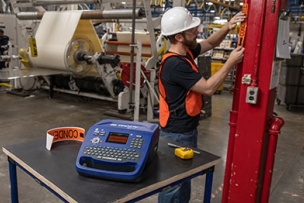It takes a lot to get it right. To be a company that lasts more than 100 years by continually evolving and growing to meet the needs of our markets and customers. Our first-to-the-market and best-in-the-market approach led us to receive hundreds of patents over the years and truly shape an industry. We do what others don't in ways they can't. We offer innovative products backed by years of research and development. Beyond our quality products and reliable solutions, we add value for our customers through strong partnerships and a commitment to solving important problems. Brady offers solutions to help increase safety, security, productivity and performance throughout your facility—everything from printing systems, software and high-performance labels to facility signs, safety devices, expert safety services and more.
When at work, nearly every employee is compelled to do good and make a positive contribution to their team and organization. But sometimes their knowledge, or lack thereof, can hinder their ability to do just that.
When there’s a lack of knowledge or an information deficit, it can lead to wasted time:
- Searching for the information or tools needed to complete the job
- Asking questions to gather the needed information
- Waiting for answers
But, there are human factors that can also get in the way of resolving an information gap.
While it would make logical sense for an employee to ask more questions when they require additional information, that doesn’t always happen. The human ego can, at times, lead these same great employees to avoid asking more questions because they think they should know the answer or they fear being perceived as incompetent.
Unfortunately, when employees don’t seek out those answers, they are likely to just make something up or come to their own, potentially wrong, conclusion. Occasionally, this approach can turn out just fine, reinforcing the undesirable behavior. But, when this approach fails, it can cause costly errors that are detrimental to the entire enterprise.
Wouldn’t it be nice if you could ensure your team has the information they need when they need it? A visual workplace can help you achieve that goal.
What is the Visual Workplace?
In a visual workplace, critical information is conveyed through visual devices, positioned at the point of need, that can be understood at-a-glance. Because visuals are easy to understand, an effective visual workplace can improve safety by reinforcing training and eliminate wasted downtime that had previously been spent searching, asking or waiting for information.
For instance, when storeroom shelves are well-labeled, employees don’t have to waste time searching for something or accidentally grabbing the wrong thing. Helping them find what they need at-a-glance instantly improves efficiency.
A brief history of visual workplace
The concept of the visual workplace was introduced in the 1990s by Gwendolyn Galsworth, Ph.D., who is considered the world’s leading expert on the concept. In the 2017 edition of her book "Visual Workplace: Visual Thinking" , Dr. Galsworth likens a workplace that lacks visuals to trying to reach a destination without signs, signals or lines on the road.
You can probably make it, but you are likely to pay a terrible price, she states.







Talk to Us!
Leave a reply
Your email address will not be published. Required fields are marked *